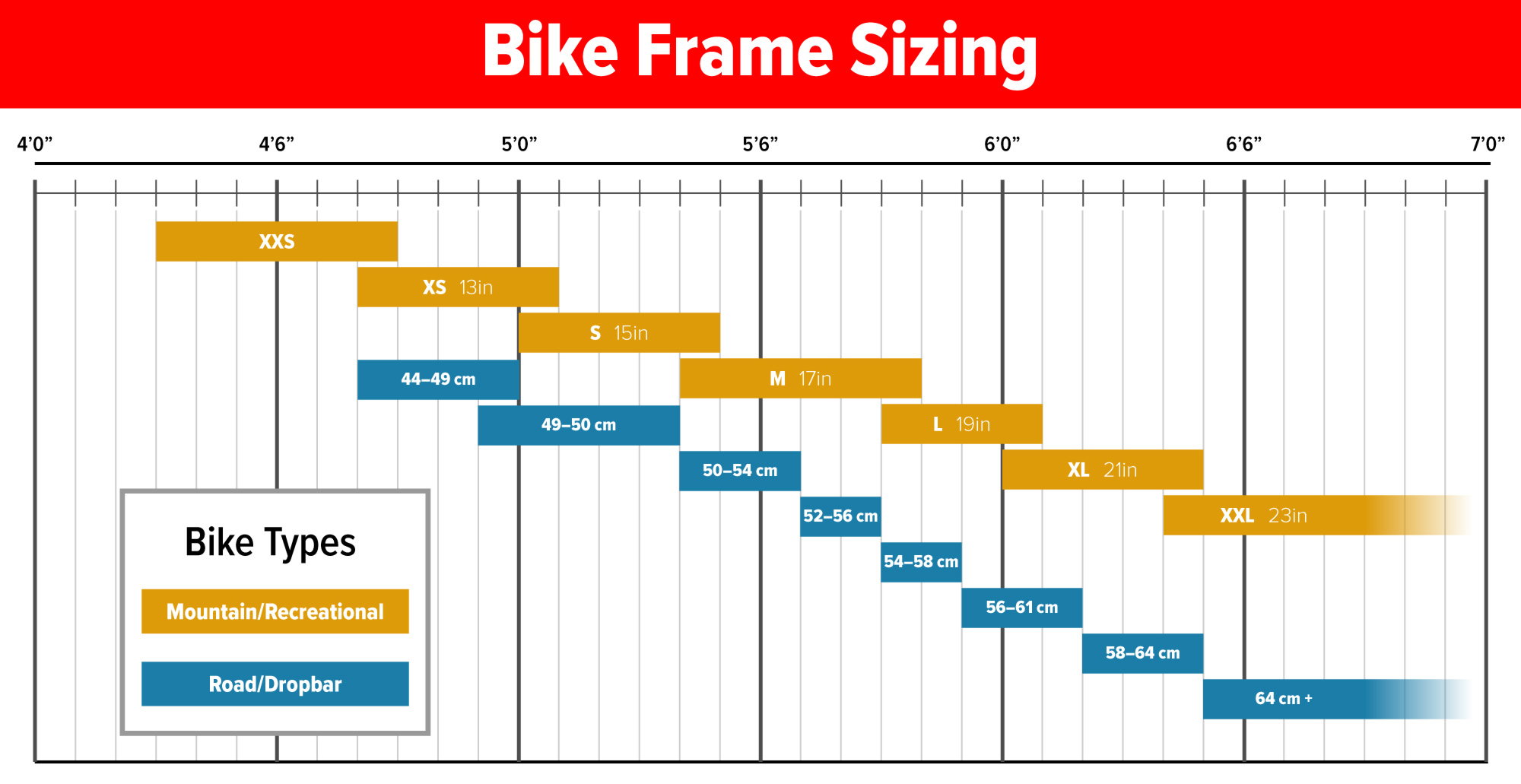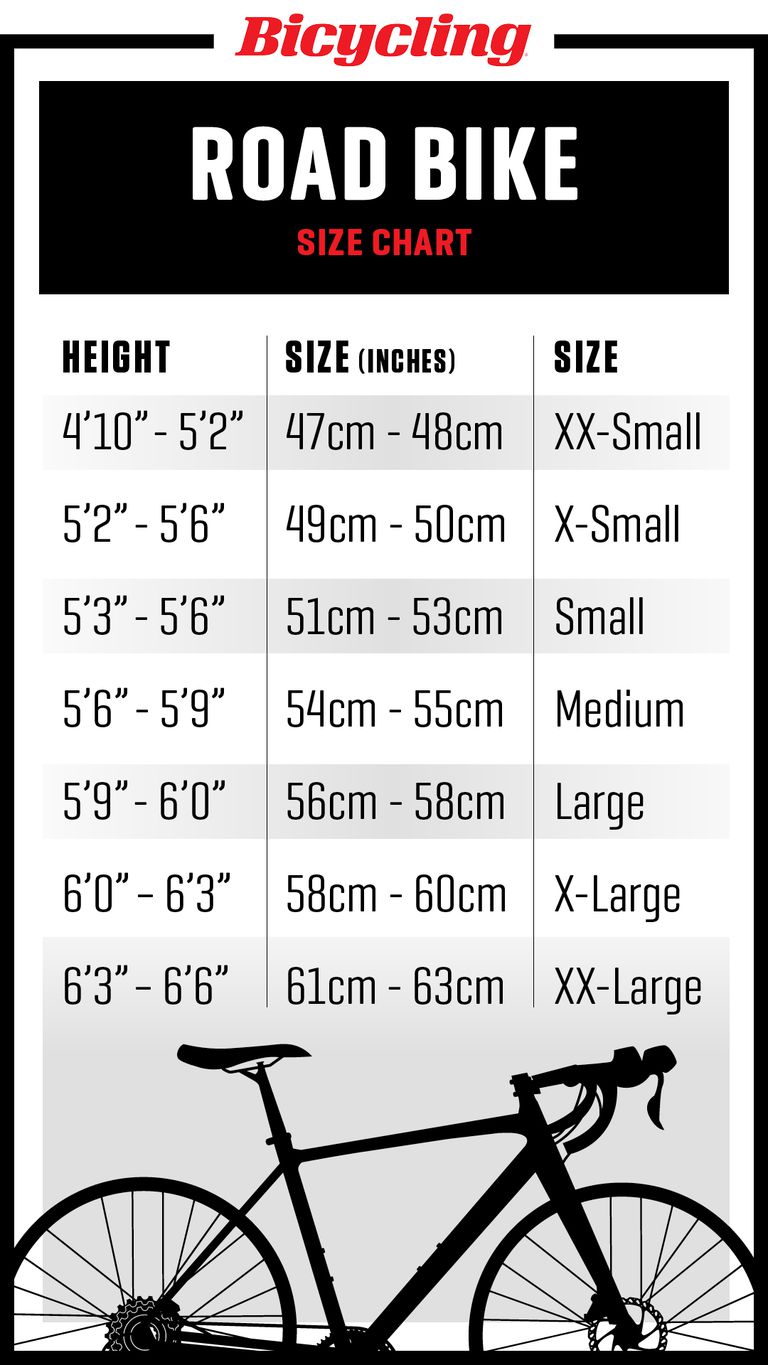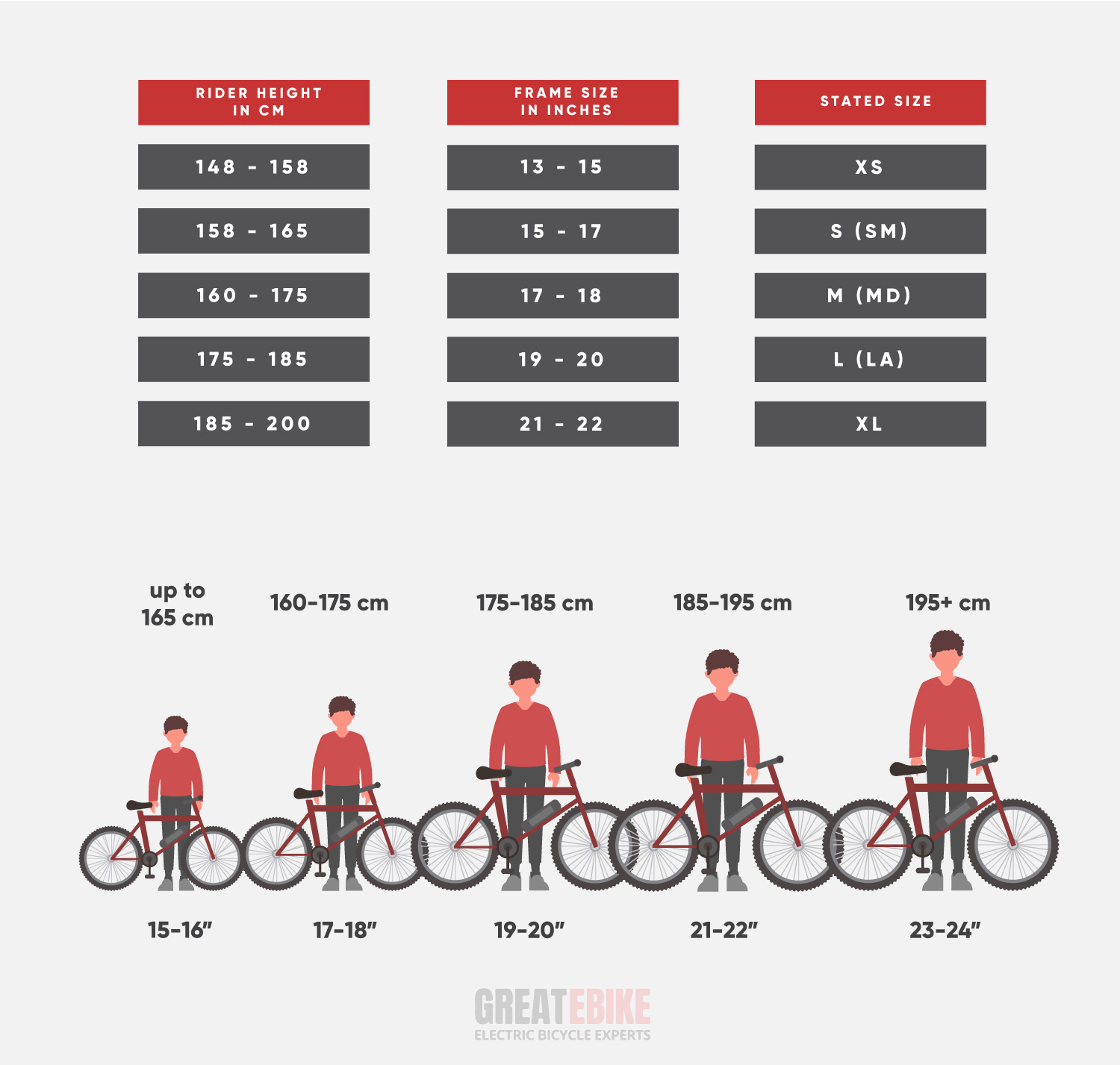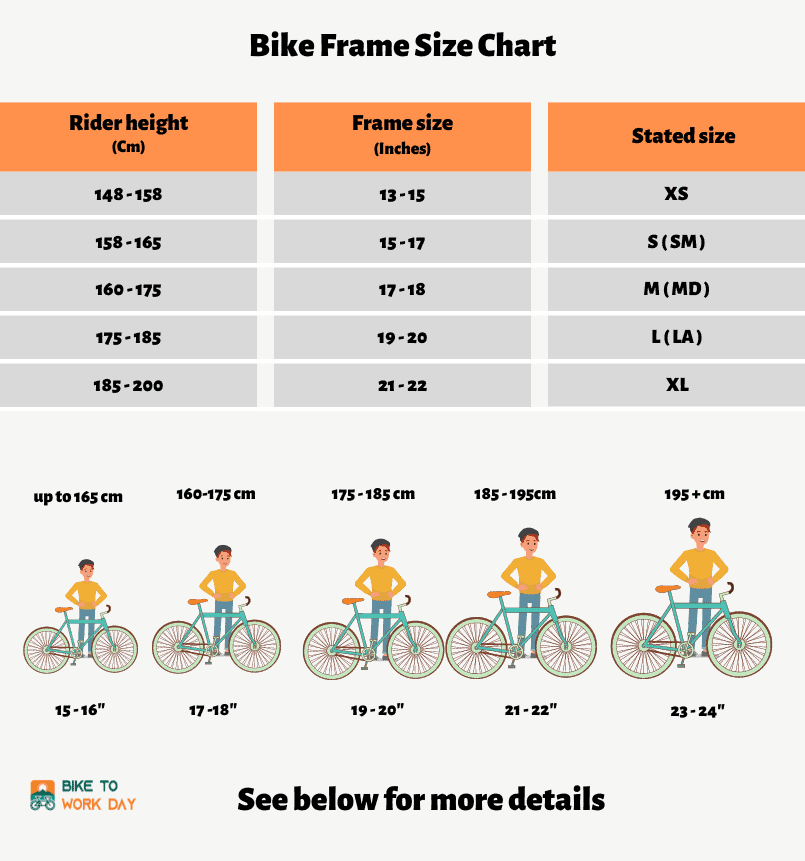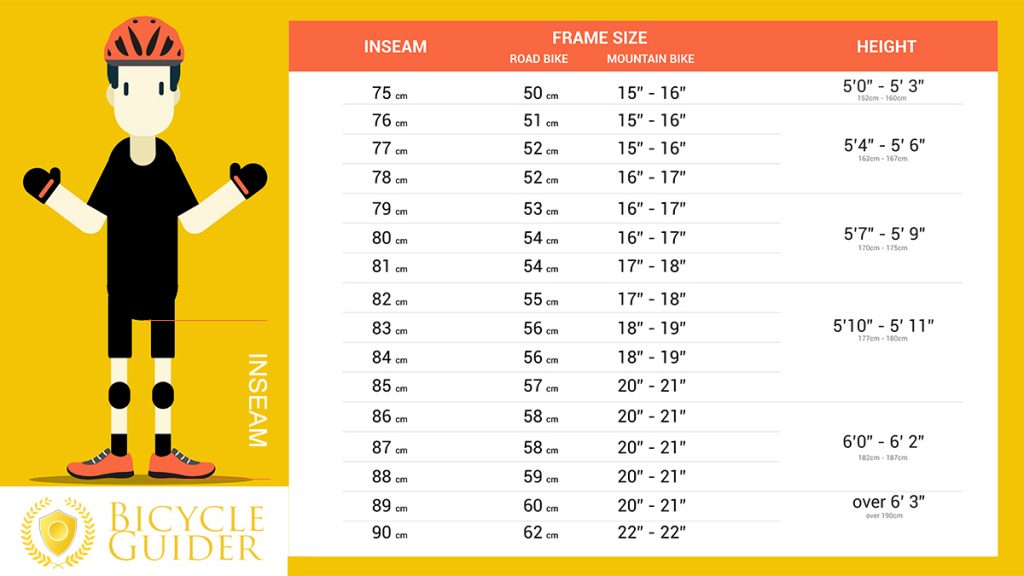Why Frame Size Matters: The Impact on Comfort and Performance
Choosing the right bike frame size is crucial for a comfortable and enjoyable ride. A poorly fitting frame can lead to discomfort, fatigue, and even injury. When a rider is on a bike that is too small or too large, it can put unnecessary strain on the body, particularly the back, neck, and knees. This can result in a range of issues, from mild discomfort to chronic pain and long-term damage.
A bike frame that is too small can cause the rider to hunch over, leading to strain on the back and neck. On the other hand, a frame that is too large can cause the rider to overstretch, leading to strain on the knees and hips. In both cases, the rider’s performance and overall riding experience are compromised.
In addition to comfort and performance, choosing the right bike frame size is also important for safety. A bike that is too small or too large can be difficult to control, particularly at high speeds or in tight corners. This can increase the risk of accidents and injuries.
So, how do you select the right bike frame size? It starts with understanding your body and measuring your key dimensions, including your inseam, arm length, and torso length. By taking these measurements and using them to determine your ideal bike frame size, you can ensure a comfortable and enjoyable ride.
When it comes to selecting a bike frame size, there are several factors to consider. These include your riding style, the type of bike you are riding, and your personal preferences. For example, if you are a road bike rider, you may prefer a smaller frame size for improved aerodynamics and handling. On the other hand, if you are a mountain bike rider, you may prefer a larger frame size for increased stability and control.
Ultimately, choosing the right bike frame size is a critical decision that can make all the difference in your riding experience. By taking the time to understand your body and select the right frame size, you can ensure a comfortable, enjoyable, and safe ride.
Understanding Your Body: Measuring for the Perfect Fit
To determine your ideal bike frame size, you’ll need to take a few key measurements. These measurements will help you understand your body and find a frame size that fits you perfectly.
The first measurement to take is your inseam. This is the distance from the floor to the crotch of your pants. To measure your inseam, stand against a wall with your feet shoulder-width apart and your back straight. Place a book or ruler between your legs, with the spine of the book or the edge of the ruler pressed against the wall. Measure the distance from the floor to the top of the book or ruler. This is your inseam.
Next, measure your arm length. This is the distance from the center of your back to the tip of your middle finger. To measure your arm length, stand up straight and hold your arm straight out to the side. Measure the distance from the center of your back to the tip of your middle finger.
Finally, measure your torso length. This is the distance from the base of your neck to the top of your hip bone. To measure your torso length, stand up straight and place a ruler or measuring tape along the length of your torso. Measure the distance from the base of your neck to the top of your hip bone.
Once you have these measurements, you can use them to determine your ideal bike frame size. Most bike manufacturers provide a size chart that corresponds to these measurements. By matching your measurements to the size chart, you can find a frame size that fits you perfectly.
It’s also important to consider your riding style and preferences when selecting a bike frame size. For example, if you’re a road bike rider, you may prefer a smaller frame size for improved aerodynamics and handling. On the other hand, if you’re a mountain bike rider, you may prefer a larger frame size for increased stability and control.
By taking the time to measure your body and understand your riding style, you can find a bike frame size that fits you perfectly and provides a comfortable and enjoyable ride.
Frame Size Options: Understanding the Different Types
When it comes to bike frame sizes, there are several options to choose from, each with its own unique characteristics and benefits. Understanding the different types of frame sizes can help you make an informed decision when selecting a bike.
Road bike frames are designed for speed and efficiency, with a focus on aerodynamics and lightweight materials. They typically have a more aggressive geometry, with a lower standover height and a longer top tube. This makes them ideal for riders who prioritize speed and performance.
Mountain bike frames, on the other hand, are designed for durability and versatility. They have a more relaxed geometry, with a higher standover height and a shorter top tube. This makes them ideal for riders who prioritize comfort and control on rough terrain.
Hybrid bike frames are a combination of road and mountain bike frames, offering a balance of speed and comfort. They have a more upright geometry, with a higher standover height and a shorter top tube. This makes them ideal for riders who prioritize comfort and versatility.
In addition to these main categories, there are also several sub-categories of frame sizes, including compact, endurance, and gravel frames. Compact frames are designed for riders with shorter torsos, while endurance frames are designed for riders who prioritize comfort and stability. Gravel frames are designed for riders who ride on a mix of pavement and dirt roads.
When selecting a bike frame size, it’s essential to consider your riding style and preferences. For example, if you’re a road bike rider, you may prefer a smaller frame size for improved aerodynamics and handling. On the other hand, if you’re a mountain bike rider, you may prefer a larger frame size for increased stability and control.
By understanding the different types of frame sizes and their unique characteristics, you can make an informed decision when selecting a bike. Remember to consider your riding style, preferences, and body type when choosing a frame size, and don’t be afraid to test ride different bikes to find the perfect fit.
How to Choose the Right Frame Size for Your Riding Style
When it comes to choosing the right bike frame size, there are several factors to consider. One of the most important is your riding style. Different riding styles require different frame sizes, and choosing the right one can make all the difference in your comfort, performance, and overall riding experience.
For road bike riders, a smaller frame size is often preferred. This is because road bikes are designed for speed and efficiency, and a smaller frame size allows for a more aerodynamic position. However, if you’re a road bike rider who prioritizes comfort over speed, a slightly larger frame size may be more suitable.
For mountain bike riders, a larger frame size is often preferred. This is because mountain bikes are designed for stability and control, and a larger frame size provides more room for maneuverability. However, if you’re a mountain bike rider who prioritizes agility over stability, a slightly smaller frame size may be more suitable.
For hybrid bike riders, a medium-sized frame is often preferred. This is because hybrid bikes are designed for versatility, and a medium-sized frame provides a balance of comfort and performance.
When choosing a frame size, it’s also important to consider your body type. For example, if you have a longer torso, you may prefer a larger frame size to accommodate your body. On the other hand, if you have a shorter torso, you may prefer a smaller frame size.
Ultimately, the key to choosing the right frame size is to consider your riding style, body type, and personal preferences. By taking the time to think about what you need and want in a bike, you can find a frame size that provides a comfortable and enjoyable ride.
It’s also important to remember that frame size is just one factor to consider when choosing a bike. Other factors, such as wheel size, tire width, and componentry, can also affect the overall fit and feel of the bike. By considering all of these factors, you can find a bike that meets your needs and provides a great riding experience.
Real-World Examples: Popular Bike Models and Their Frame Sizes
Let’s take a look at some popular bike models and their corresponding frame sizes to illustrate how different frame sizes can cater to different riding styles and preferences.
The Trek Domane, for example, is a popular road bike model that comes in a range of frame sizes, from 50cm to 62cm. The Domane is designed for comfort and performance, with a focus on absorbing road vibrations and providing a smooth ride. The frame size options allow riders to choose the perfect fit for their body type and riding style.
Another popular road bike model is the Specialized Roubaix, which comes in frame sizes ranging from 49cm to 61cm. The Roubaix is designed for endurance riding, with a focus on comfort and stability. The frame size options allow riders to choose the perfect fit for their body type and riding style, whether they’re riding on smooth roads or rough terrain.
For mountain bike enthusiasts, the Trek Fuel EX is a popular model that comes in frame sizes ranging from 15.5 inches to 21.5 inches. The Fuel EX is designed for trail riding, with a focus on agility and maneuverability. The frame size options allow riders to choose the perfect fit for their body type and riding style, whether they’re riding on smooth trails or technical terrain.
These examples illustrate how different bike models and frame sizes can cater to different riding styles and preferences. By considering the specific features and benefits of each model, riders can choose the perfect fit for their needs and enjoy a comfortable and enjoyable ride.
When selecting a bike model and frame size, it’s essential to consider factors such as riding style, body type, and personal preferences. By taking the time to research and compare different models, riders can find the perfect fit for their needs and enjoy a comfortable and enjoyable ride.
Test Ride Before You Buy: Ensuring the Perfect Fit
Once you’ve narrowed down your options and found a bike that seems like the perfect fit, it’s essential to take it for a test ride before making a purchase. A test ride will allow you to experience the bike’s handling, comfort, and performance firsthand, and ensure that it’s the right fit for your body and riding style.
When conducting a test ride, pay attention to how the bike feels beneath you. Do you feel comfortable and confident, or do you feel awkward and unstable? Take note of any discomfort or pain, and consider whether it’s something that can be adjusted or if it’s a sign of a poor fit.
Also, pay attention to the bike’s handling and performance. Does it feel responsive and agile, or does it feel sluggish and unresponsive? Consider whether the bike’s handling and performance meet your needs and expectations.
During the test ride, also take the opportunity to adjust the bike to fit your body. Adjust the saddle height, handlebar height, and other components to ensure that you’re in a comfortable and efficient riding position.
By taking the time to test ride a bike before purchasing, you can ensure that you find the perfect fit for your body and riding style. Remember, a bike that’s the right fit will provide a comfortable and enjoyable ride, while a bike that’s the wrong fit can lead to discomfort, fatigue, and even injury.
When test riding a bike, it’s also essential to consider the terrain and conditions you’ll be riding in. If you’ll be riding on rough terrain, consider a bike with a more relaxed geometry and a suspension system. If you’ll be riding on smooth roads, consider a bike with a more aggressive geometry and a focus on speed and efficiency.
By taking the time to test ride a bike and considering your specific needs and preferences, you can find the perfect fit and enjoy a comfortable and enjoyable ride.
Common Mistakes to Avoid: Frame Size Selection Pitfalls
When selecting a bike frame size, there are several common mistakes to avoid. One of the most common mistakes is relying solely on height or weight to determine frame size. While these factors can provide a general guideline, they do not take into account individual body proportions and riding style.
Another common mistake is neglecting to consider riding style and preferences. Different riding styles require different frame sizes, and failing to consider this can result in a poorly fitting frame. For example, a road bike rider may require a smaller frame size for improved aerodynamics, while a mountain bike rider may require a larger frame size for increased stability.
Additionally, some riders may make the mistake of choosing a frame size based on the size of their previous bike. However, bike frame sizes can vary significantly between manufacturers and models, so it’s essential to take the time to measure your body and determine the ideal frame size for your specific needs.
Finally, some riders may make the mistake of prioritizing aesthetics over fit. While a certain frame size may look appealing, it’s essential to prioritize fit and comfort over appearance. A poorly fitting frame can lead to discomfort, fatigue, and even injury, so it’s essential to take the time to find the perfect fit.
By avoiding these common mistakes, riders can ensure that they find the perfect frame size for their needs and enjoy a comfortable and enjoyable ride. Remember, the right frame size is essential for optimal performance, comfort, and safety, so take the time to get it right.
When selecting a bike frame size, it’s also essential to consider the type of riding you’ll be doing. Different types of riding require different frame sizes, and failing to consider this can result in a poorly fitting frame. For example, a commuter bike rider may require a smaller frame size for improved maneuverability, while a touring bike rider may require a larger frame size for increased stability.
Conclusion: Finding Your Perfect Fit for a Comfortable and Enjoyable Ride
Choosing the right bike frame size is a crucial step in ensuring a comfortable and enjoyable ride. By understanding the importance of frame size, measuring your body, and considering your riding style and preferences, you can find the perfect fit for your needs.
Remember, a poorly fitting frame can lead to discomfort, fatigue, and even injury, so it’s essential to take the time to get it right. By following the tips and guidelines outlined in this article, you can find a bike frame size that provides optimal comfort, performance, and safety.
Don’t be afraid to take your time and do your research when selecting a bike frame size. Consider visiting a local bike shop and talking to a professional fitter who can help you determine the perfect fit for your body and riding style.
By investing the time and effort into finding the perfect bike frame size, you can enjoy a comfortable and enjoyable ride, and get the most out of your cycling experience. Happy cycling!




